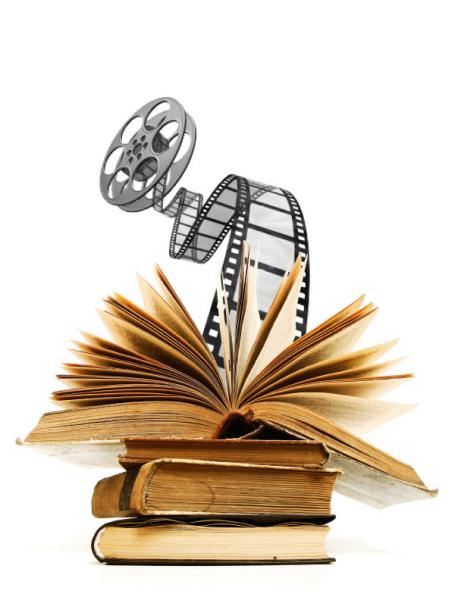
Imagine your favorite book being brought to life on the big screen, unraveling a physical version of the imagery you created in your head: the worlds you’ve explored and the characters you’ve imagined now unfolding before your eyes…
Book-to-film adaptations have thrilled and frustrated audiences for the past few decades: while some perfectly capture the essence of the original story, others fail to satisfy the audience by incorporating some unexpected changes to the initial plot.
When we read a book, we immerse ourselves in the world that the author has crafted, with each page adding to the mental picture we weave of the characters and their surroundings. What is truly satisfying in book-to-film adaptations is comparing your imagination to the author’s vision – especially if the latter is part of the directing team. This contribution involves the author in the casting process and the overall direction of the film or series, which can shape how the story is brought to life on-screen. Even though characters, particularly the main ones, are often described in detail in the book, a distinct portrait of them takes shape in every reader’s mind. Similarly, a subjective depiction of the story’s scenery in the book makes it intriguing to see the locations and environments captured in the film, often altering the imagery you envisioned. Thus, the personal imagination versus cinematic interpretation sparks a taste of excitement for the audience and a sense of connection to the original book.
However, the audience is sometimes left disappointed by the film adaptation of a novel whenever the movie does not meet their expectations. It is crucial to acknowledge that book-to-film adaptations are more challenging than they appear to be. Directors often face a dilemma where they struggle to decide whether they should stay true to the book or make some changes due to cinematic limitations. Such limitations include time limits: compressing a several-hundred-page book into a two-hour film inevitably involves sacrificing much of the book’s content, leaving fans of the original book crestfallen or even frustrated. Moreover, the character's inner thoughts and struggles, which are easily written in the book, are hardly captured in the film. Hence, some scenes might seem incomplete to those who have already read the book and admire its little details.
An example worth mentioning is Gone Girl (2014), a movie based on Gillian Flynn’s novel. This film stayed faithful to the dark, suspenseful narrative of the book while maintaining the psychological complexity of the characters. The film successfully mirrors the book’s twist, keeping fans of the novel content.
In conclusion, prioritizing convenience over accuracy is a must in book-to-film adaptations: film producers should strive to accomplish the same feeling of excitement and suspense that was offered by the book to convey its magic in the movie. Surely, preserving the essence of the storyline is crucial to fulfilling the purpose of a book-to-film adaptation, but it is also essential to acknowledge that filmmakers are sometimes forced to opt for more practical choices, meaning that some sacrifices are unavoidable in order to bring the book to life on screen. Therefore, the audience should keep an open mind when watching a movie adaptation of a novel and enjoy the fresh cinematic experience.